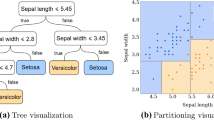Abstract
We study the dichotomous choice model under conditions of uncertainty. In this model, a committee of decision makers is required to select one of two alternatives, of which exactly one is correct. A decision rule translates the individual opinions into a group decision. We focus on the direction concerned with the identification of the optimal decision rule under partial information on the decision skills. Namely, we assume the correctness probabilities of the committee members to be independent random variables, selected from some given distribution. In addition, we assume that the ranking of the members in the committee is known. Thus, one can follow rules based on this ranking.
One of the commonly used measures of the efficiency of a decision rule is its probability of being optimal. Here we provide a method for an explicit calculation of this probability for any given weighted majority rule for a wide family of distribution functions. Moreover, under the assumption of exponentially distributed decision skills, we provide an improved algorithm for this calculation. We illustrate our results with various examples.
Similar content being viewed by others
References
Baker, K.M.: Condorcet: Selected Writings. The Bobbs-Mervill, Indianapolis (1976)
Ben-Yashar, R., Paroush, J.: Optimal decision rules for fixed-size committees in polychotomous choice situations. Soc. Choice Welf. 33(18), 737–746 (2001)
Berend, D., Bromberg, L.: Uniform decompositions of polytopes. Appl. Math. 33(2), 243–252 (2006)
Berend, D., Harmse, J.: Expert rule versus majority rule under partial information. Theory Dec. 35, 179–197 (1993)
Berend, D., Sapir, L.: Optimality of the expert rule under partial information. Acta Appl. Math. 69, 141–162 (2001)
Berend, D., Sapir, L.: Expert rule versus majority rule under partial information, II. J. Appl. Math. Dec. Sci. 6(2), 77–99 (2002)
Berend, D., Sapir, L.: Between the expert and majority rules. Adv. Appl. Probab. 35, 1–20 (2003)
Berend, D., Sapir, L.: Range of asymptotic behavior of the optimality probability of the expert and majority rules. J. Appl. Probab. 43, 16–31 (2006)
Berend, D., Sapir, A., Sapir, L.: Decision making approach to IT problems. Preprint
de Condorcet, N.C.: Essai sur l’Application de l’Analyse à la Probabilité des Décisions Rendues à la Pluralité des Voix. Paris (1785)
Conitzer, V., Sandholm, T.: Common voting rules as maximum likelihood estimators. In: Proceedings of the 21st Annual Conference on Uncertainty in Artificial Intelligence (UAI-05), pp. 145–152. Edinburgh, Scotland, UK (2005)
Feller, W.: An Introduction to Probability Theory and its Applications, 2nd edn., vol. II. Wiley, New York (1971)
Gradstein, M., Nitzan, S.: Performance evaluation of some special classes of weighted majority rules. Math. Soc. Sci. 12, 31–46 (1986)
Grofman, B., Owen, G.: Condorcet models, avenues for future research. In: Information Pooling and Group Decision Making. Proceedings of the Second University of California, Irvine, Conference on Political Economy. JAI Press INC, London (1986)
Grofman, B., Owen, G., Feld, S.: Thirteen theorems in search of the truth. Theory Dec. 15, 261–278 (1983)
Karotkin, D.: Justification of the simple majority and chairman rules. Soc. Choice Welf. 13, 479–486 (1996)
Karotkin, D.: The network of weighted majority rules and weighted majority games. Games Econ. Behav. 22, 299–315 (1998)
Karotkin, D., Nitzan, S.: A note on restricted majority rules: invariance to rule selection and outcome distinctiveness. Soc. Choice Welf. 13(3), 269–274 (1996)
Karotkin, D., Paroush, J.: Robustness of optimal decision rules where one of the team members is exceptionally qualified. Soc. Choice Welf. 26, 131–141 (2006)
Karotkin, D., Schaps, M.: The network of weighted majority rules and its geometric realizations. Games Econ. Behav. 42, 75–90 (2003)
McLean, I., Hewitt, F.: Condorcet: Foundations of Social Choice and Political Theory. Elgar, Brookfield (1994)
Nitzan, S., Paroush, J.: Optimal decision rules in uncertain dichotomous choice situations. Int. Econ. Rev. 23, 289–297 (1982)
Nitzan, S., Paroush, J.: Collective Decision Making. Cambridge University Press, Cambridge (1985)
Nurmi, H.: Past masters and their followers. In: Heiskanen, I., Hanninen, S. (eds.) Exploring the Basis Politics. The Finnish Political Science Association, Helsinki (1983)
Reimer, T., Katsikopoulos, K.V.: The use of recognition in group decision-making. Cogn. Sci.: Multidiscip. J. 28(6), 1009–1029 (2004)
Sapir, L.: The optimality of the expert and majority rules under exponentially distributed competence. Theory Dec. 45, 19–35 (1998)
Sapir, L.: Expert rule versus majority rule under partial information, III. Paper presented at the heavy tails conference, American University, Washington, 3–5 June 1999
Sapir, L.: Comparison of the polar decision rules for various types of distributions. Theory Dec. 56, 325–343 (2004)
Shapley, L., Grofman, B.: Optimality grouping judgmental accuracy in presence of independence. Public Choice 42, 329–343 (1984)
Urken, A.B.: The Condorcet-Jefferson connection and the origins of social choice theory. Public Choice 72, 213–236 (1991)
Urken, A.B.: Using collective decision system support to manage error in wireless sensor fusion. Information Fusion, 2005 8th International Conference on Information Fusion (FUSION), vol. 2, pp. 1605–1612, 25–28 July 2005
Author information
Authors and Affiliations
Corresponding author
Rights and permissions
About this article
Cite this article
Berend, D., Bromberg, L. & Sapir, L. Algorithmic Calculation of the Optimality Probability of Decision Rules. Acta Appl Math 110, 973–990 (2010). https://doi.org/10.1007/s10440-009-9489-2
Received:
Accepted:
Published:
Issue Date:
DOI: https://doi.org/10.1007/s10440-009-9489-2




